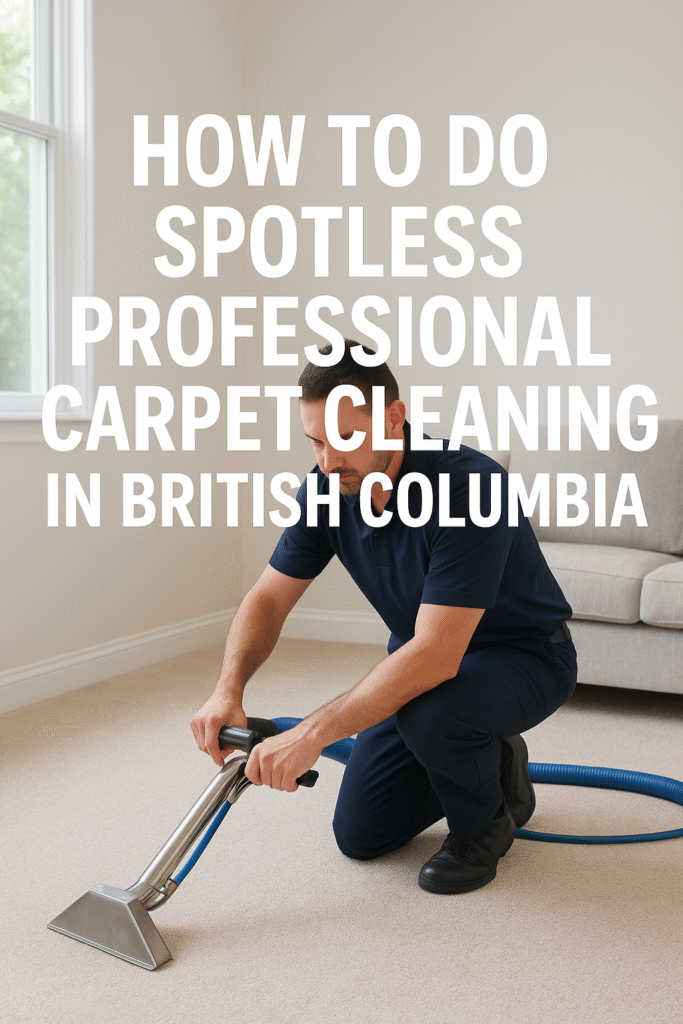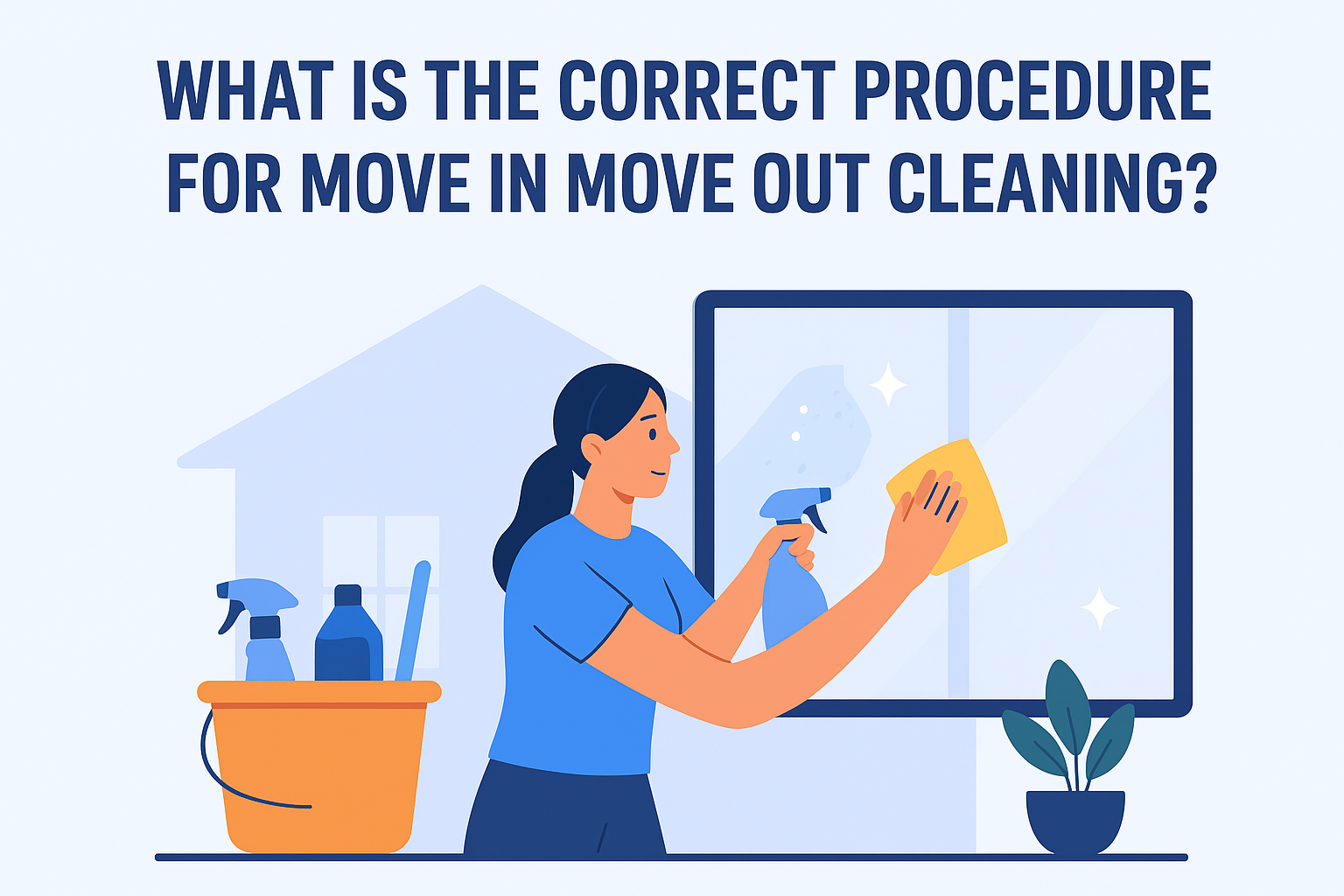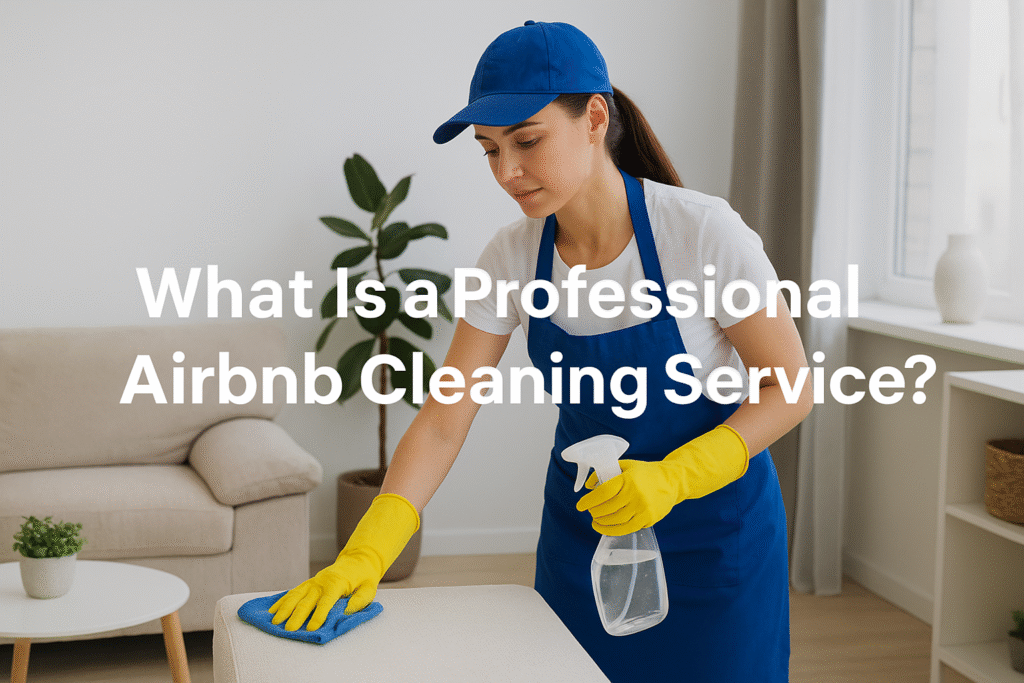When homeowners or businesses book carpet cleaning services, they expect more than a vacuum pass; they expect a skilled technician who knows how to restore, protect, and maintain carpets or rugs. A professional carpet cleaner plays a vital role in preserving your investment, improving indoor air quality, and extending carpet life. In this article, we’ll explore the full spectrum of duties of a carpet cleaner or rug cleaner from inspection to post-service advice and explain why hiring quality carpet cleaning services matters, especially for those seeking carpet cleaning in British Columbia or anywhere else.
What Exactly Is a Professional Carpet Cleaner?
A professional carpet cleaner (or rug cleaner) is a trained specialist who offers carpet cleaning services using industry-grade equipment, safe cleaning solutions, and methodical processes. Unlike DIY cleaning, professionals manage delicate materials, stubborn stains, odors, and deeply embedded soil.
They usually work in residential or commercial carpet cleaning settings — from homes, offices, hotels, to high-traffic malls. Their jobs often involve different carpet cleaning methods (steam, dry, hot water extraction) and adapting to carpet fiber types (wool, synthetic, blends). Their role demands both technical skill and customer service acumen.
Core Duties of a Professional Carpet Cleaner
Here’s a breakdown of the essential cleaning duties that a truly professional carpet cleaning service provider should perform:
1- Pre-Inspection & Assessment / Inspection Procedures
Before any cleaning begins, a professional will inspect the carpet or rug:
- Identify fiber type, wear, stains, odor sources, and previous treatments.
- Test a small, inconspicuous area with a cleaning agent to check for adverse effects (discoloration or fiber damage).
- Discuss with the client their expectations, high-traffic zones, and special concerns.
This inspection ensures the technician tailors the cleaning services appropriately and avoids surprises later.
2- Vacuuming & Soil Extraction
One of the basic but critical duties is vacuuming thoroughly to remove loose soil and debris. This step primes the carpet for deeper work. In many cases, a pre-spray or preconditioning is applied to loosen dirt before deep cleaning.
Good soil extraction ensures that embedded grit and particulate matter are removed & preventing future abrasion and wear.
3- Stain Removal & Spot Treatment
Stains from wine, coffee, ink, pet accidents, or grease require specialized carpet stain removal techniques. A professional:
- Applies pretreatment solutions or enzymatic cleaners to break down stains.
- Uses gentle agitation or spotters so the coat doesn’t spread.
- Monitors pH, dilution, and contact time to protect fibers.
This careful spot work differentiates great carpet cleaning from mediocre service.
4- Choosing & Applying the Right Deep Cleaning Method
A major duty is selecting and executing the optimal carpet cleaning method, such as:
-
Hot water extraction (steam cleaning):
Floods hot water + detergent into the carpet and extracts it. This is one of the most trusted methods for deep cleaning.
-
Dry cleaning / very low moisture (VLM) systems:
Use minimal or no moisture; helpful when drying time is critical.
-
Shampooing / bonnet method:
Sometimes used for lightly soiled carpets or maintenance cleans.
-
Dry-foam, encapsulation, or low-moisture systems
Newer eco / green cleaning options.
A true professional knows when each method is applicable and crafts a plan accordingly.
5- Odor Control & Deodorizing
Odors from pets, smoke, or cooking can linger even after cleaning. Pros incorporate odor removal from carpet by:
- Using neutralizers and deodorizers
- Applying sanitizers or bacteriostatic agents
- Sometimes ozone treatments or activated charcoal treatments (in specific cases)
This step ensures the carpet not only looks good but smells fresh.
6- Drying / Moisture Control
After cleaning, the drying duty is crucial. If carpets stay damp too long, mold or mildew can develop. A professional:
- Deploys air movers, high-capacity fans, or dehumidifiers
- Opens windows, improves airflow
- Monitors moisture levels and ensures that carpets dry within a safe timeframe
This control protects both carpet integrity and indoor air quality.
7- Post-Cleaning Inspection & Walkthrough
Once cleaning is complete, a professional should:
- Inspect the carpet and rug again, checking for missed spots
- Reposition or move back furniture carefully
- Walk through with the client to demonstrate the results
- Note any limitations (e.g. permanent stains that could not be removed)
This final step builds trust and ensures client satisfaction.
8- Carpet Protection & Maintenance Advice
To help clients prolong results, professionals often:
- Apply carpet protection treatments (stain guards, fabric sealants)
- Provide a carpet cleaning checklist or maintenance schedule
- Recommend regular vacuuming, spot treating spills quickly, and minor spot cleaning
- Educate customers about routine carpet maintenance
These duties ensure the client understands how to maintain the fresh look.
9- Equipment Maintenance & Chemical Safety
A less glamorous but essential duty is taking care of tools and safety:
- Clean, calibrate, and service extraction machines, hoses, vacuums
- Store, label, and handle chemicals safely (dilution ratios, MSDS, proper PPE)
- Ensure safety procedures (ventilation, slip prevention) are followed
Well-maintained equipment and safe handling protect both the technician and the carpet.
10- Upselling & Customer Service
Finally, professionals often:
- Suggest additional cleaning services such as upholstery cleaning services, area rug cleaning, or commercial carpet cleaning
- Offer maintenance contracts or periodic cleaning plans
- Handle invoices, bookings, warranties, and excellent communication
Strong service and trust often lead to repeat business.
Special Considerations: Residential vs Commercial Cleaning
A residential carpet cleaning job differs from commercial carpet cleaning in scale, frequency, and equipment requirements:
- Commercial settings have heavy foot traffic, stricter schedules, and require industrial machines.
- Residential jobs often deal with delicate furnishings, varied surfaces, and personal taste.
- A professional should adjust their approach (method, cleaning agents, downtime) accordingly.
Why These Duties Matter: Benefits & ROI for Clients
When a professional completes all these duties, clients get:
- Longer carpet lifespan, free of grit, stains, and wear
- Health & hygiene improvements, allergens and bacteria reduced
- Aesthetic uplift, renewed color and texture
- Time savings & peace of mind, you don’t risk DIY mistakes
- Better value overall, proper cleaning prevents costly damage
For those in carpet cleaning in British Columbia, these same duties should be fulfilled regardless of region, and local service providers must match these standards if they want to compete.
Conclusion
The duties of a professional carpet cleaner or rug cleaner are broad and technical: inspection, soil removal, stain treatment, deep cleaning, odor control, drying, inspection, protection, equipment care, and good customer service. Each step is essential to ensure the carpet is not just clean in appearance, but healthy, durable, and well maintained.
If you need trustworthy carpet cleaning services, look for providers who clearly articulate all these duties in their proposals. Ask them to walk you through their process — if they skip inspection or drying, red flag.
Ready to transform your carpets? Contact us now to get a full-service carpet cleaning quote customized for your space. Your carpet (and your lungs) will thank you.
Frequently Asked Questions (FAQs)
1- What does a professional carpet cleaner do that I can’t do myself?
A professional uses advanced equipment, optimal cleaning methods, precise chemical mixes, and deep extraction techniques that most household machines can’t match. They also understand carpet fibers and limits, ensuring safety and effectiveness.
2- How often should I schedule carpet cleaning services?
Generally, every 12–18 months for regular homes. Homes with pets, kids, or heavy traffic may benefit from twice per year. Commercial spaces may need quarterly or even monthly.
3- Is steam cleaning better than dry cleaning?
Each has pros and cons. Hot water extraction (steam) is excellent for deep cleaning but requires more drying time. Dry cleaning / low-moisture methods dry faster and can be safer for sensitive materials. The best choice depends on carpet type and usage.
4- Can all stains be removed by a professional carpet cleaner?
No. Some stains (e.g. dye, bleach, or severe damage) may be permanent. A good technician will assess and explain limitations during inspection.
5- How long does a carpet take to dry after professional cleaning?
Drying typically takes 6–12 hours under ideal conditions (with fans, dehumidifiers). In humid or poorly ventilated environments, it may take longer.
6- Will professional cleaning damage my carpet fibers?
Not if done correctly. Professionals use appropriate pH-balanced solutions, test patches, and controlled agitation to protect fibers.
7- Are cleaning chemicals used safe for children and pets?
Reputable carpet cleaning services use EPA-approved, low-VOC or “green carpet cleaning” solutions. Always ask your provider about chemical safety and whether they rinse thoroughly.
8- Do professional carpet cleaners also handle upholstery?
Yes. Many carpet cleaning services offer upholstery cleaning services as an add-on. Make sure they have the right tools and training for fabric furniture.
9- What’s included in a typical carpet cleaning service package?
Most full packages include inspection, vacuuming, spot treatment, deep cleaning, deodorizing, drying, and a post-inspection. Some include protection or maintenance contracts.
10- Does carpet cleaning in British Columbia cost more than elsewhere?
Costs vary with local labor, equipment, and demand. Areas with high cost of living or remote locations may see premiums, but the duties performed should remain the same.






